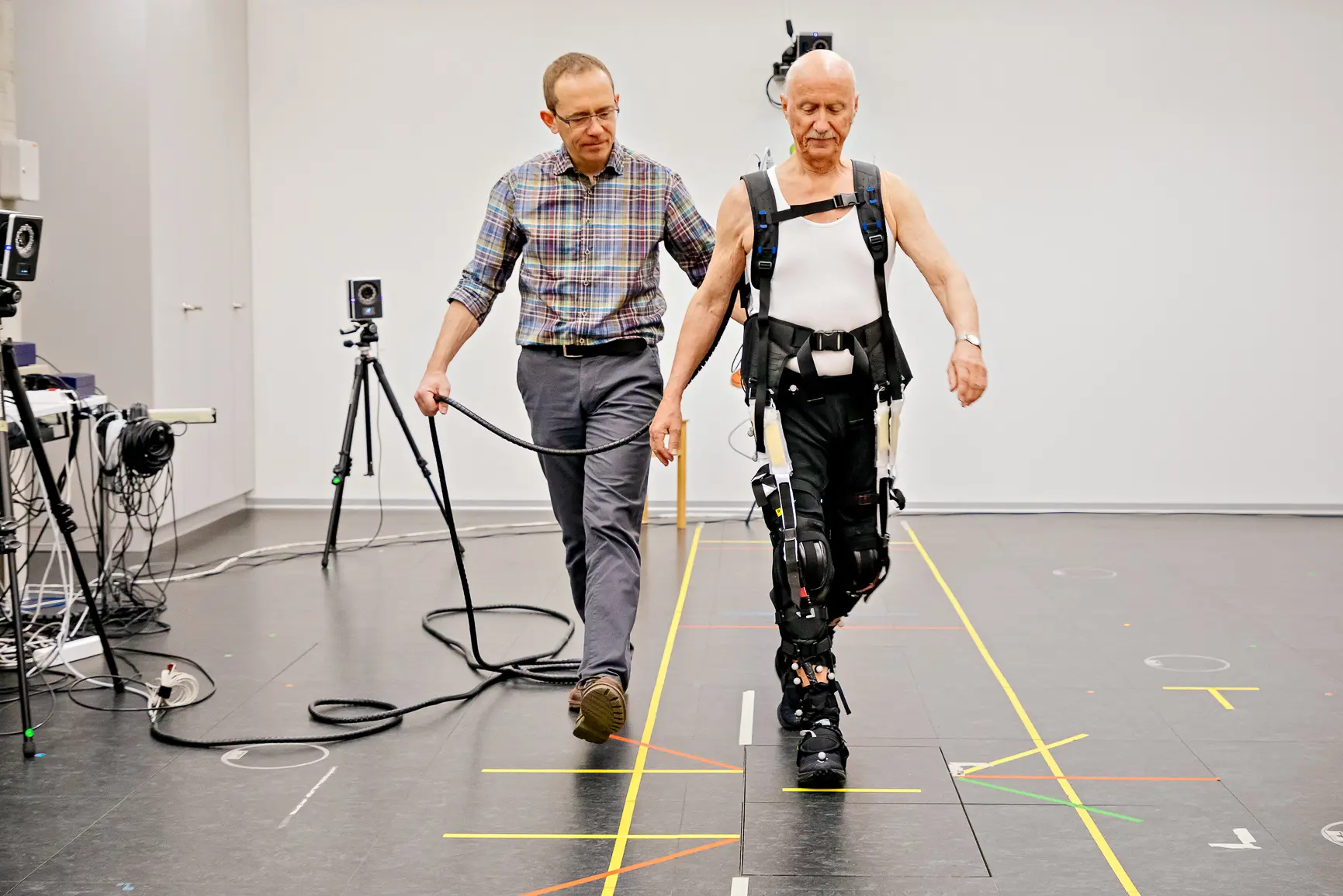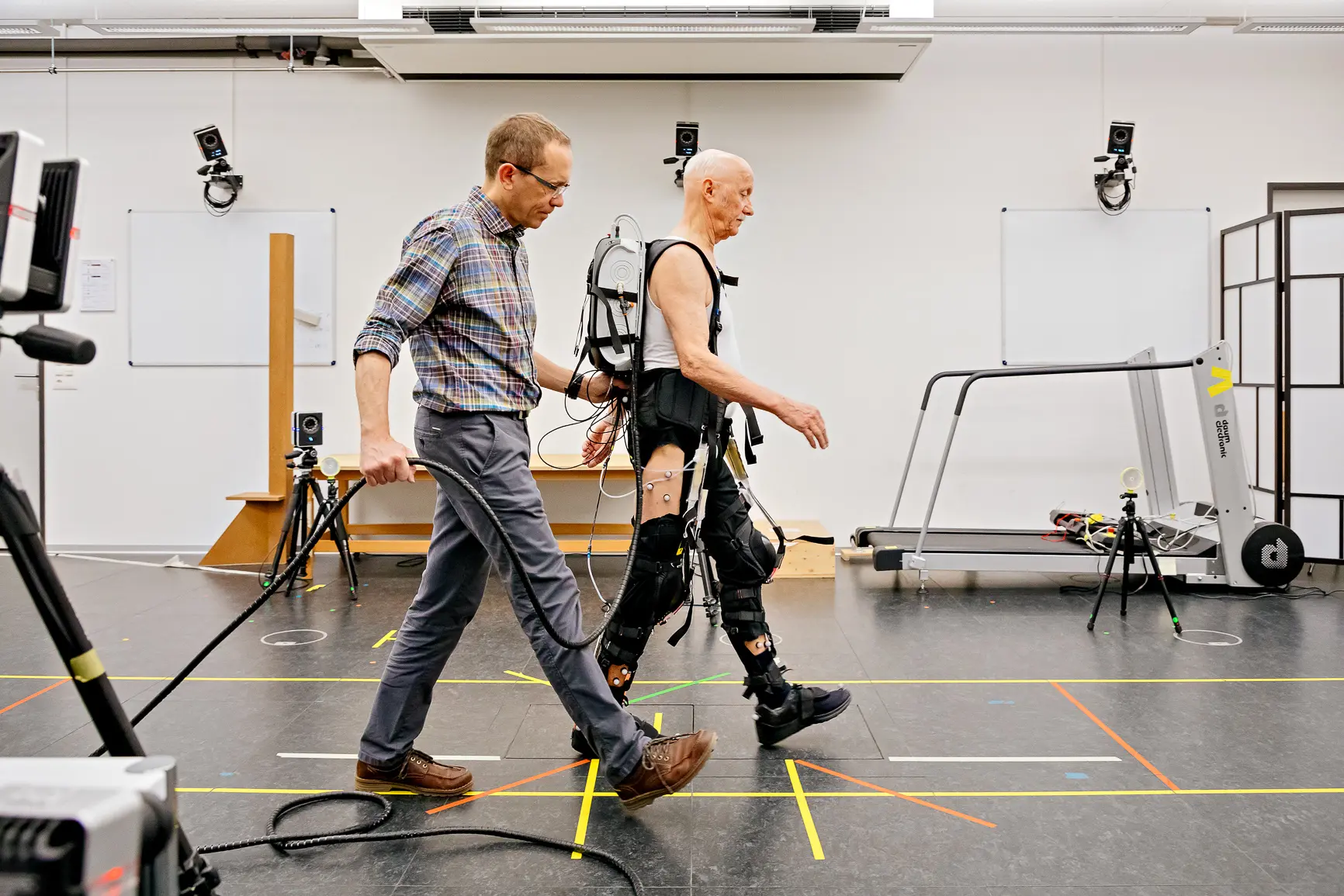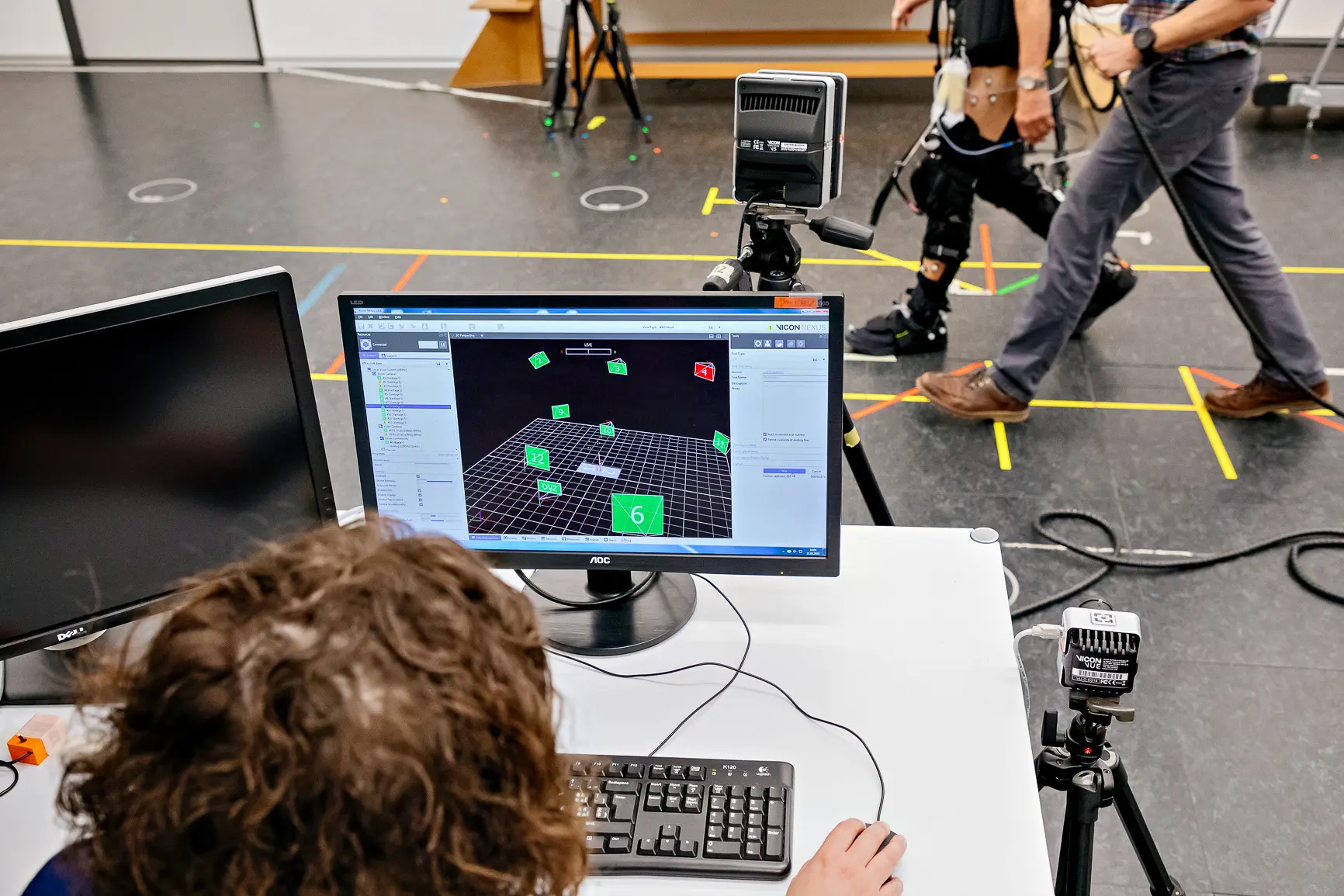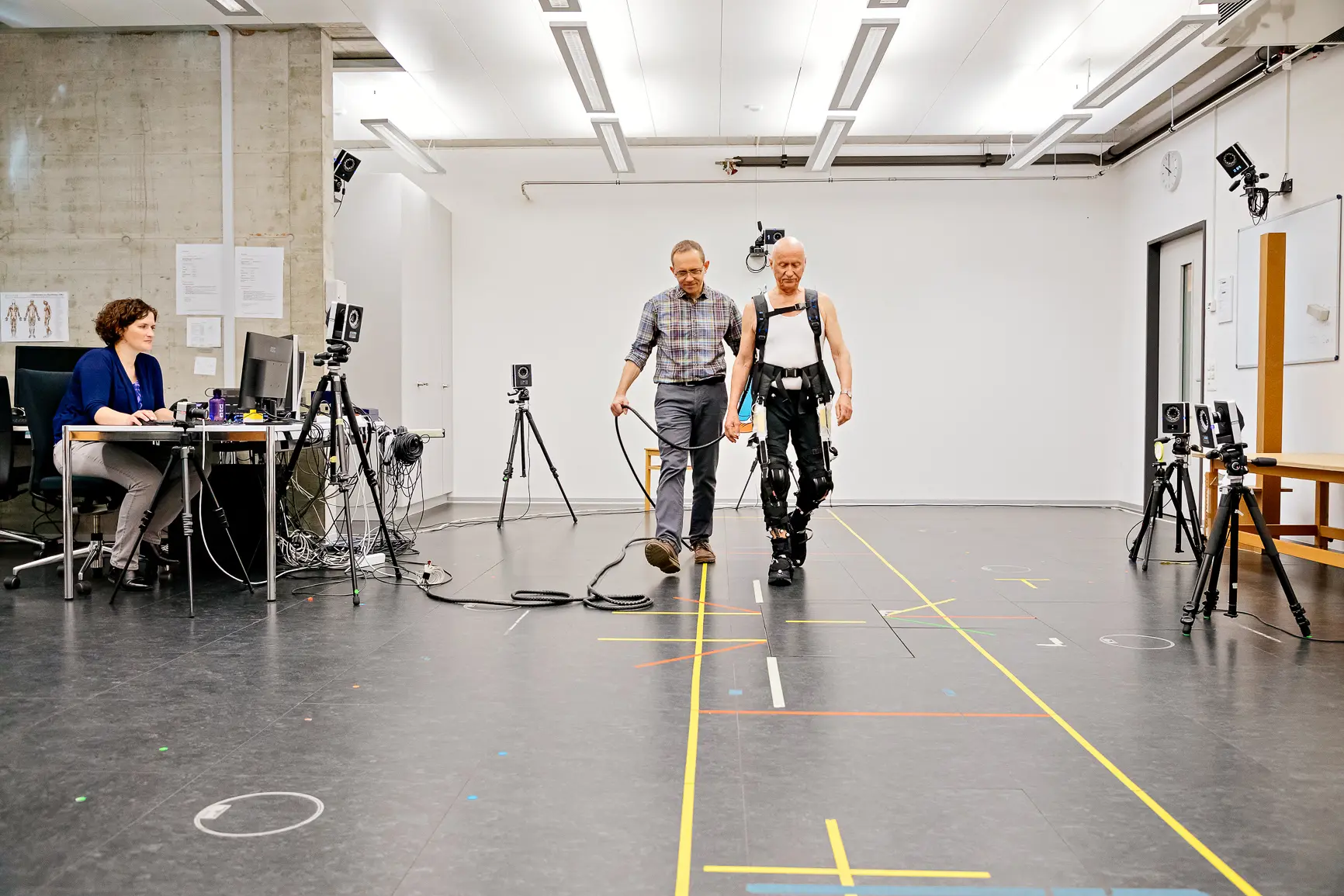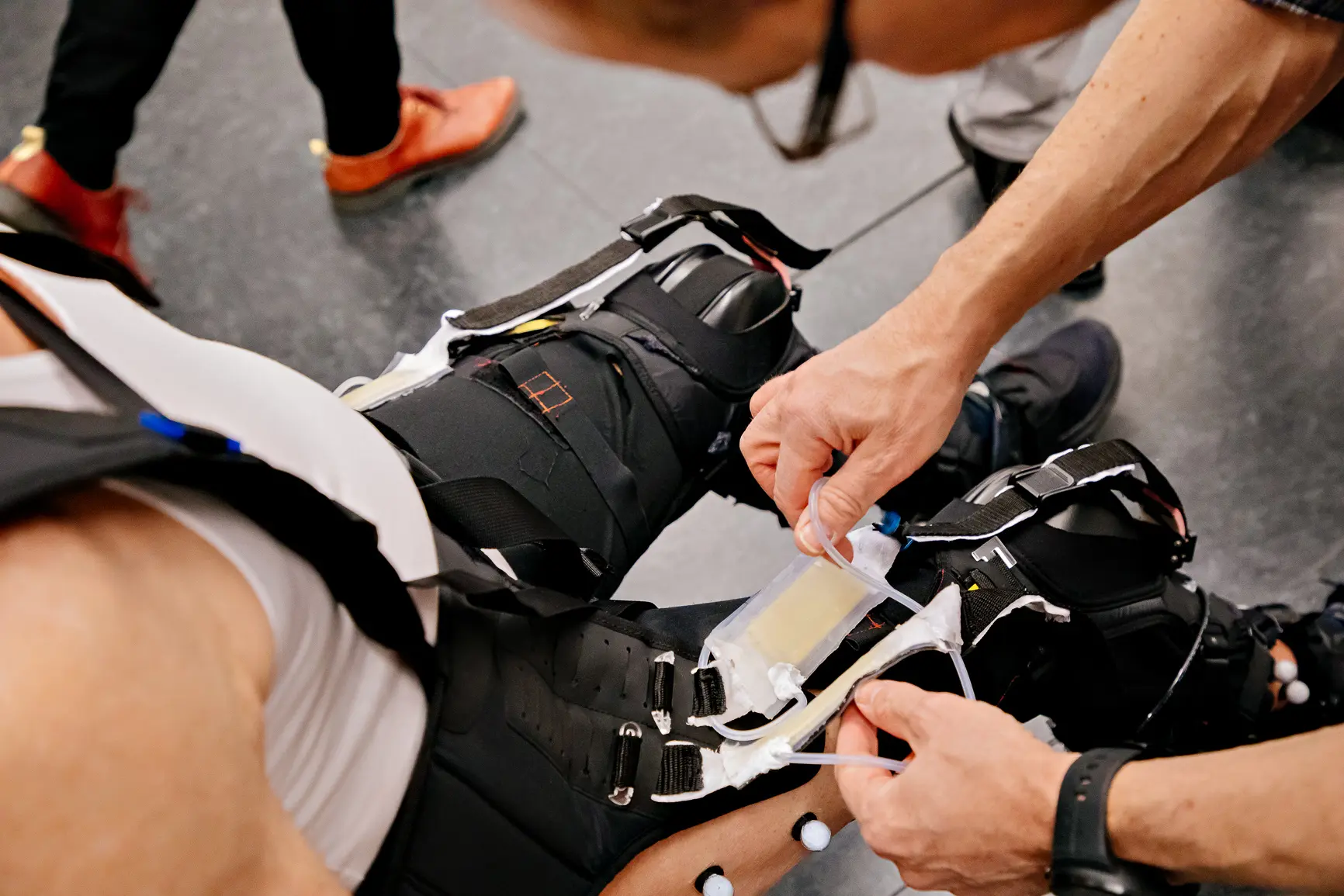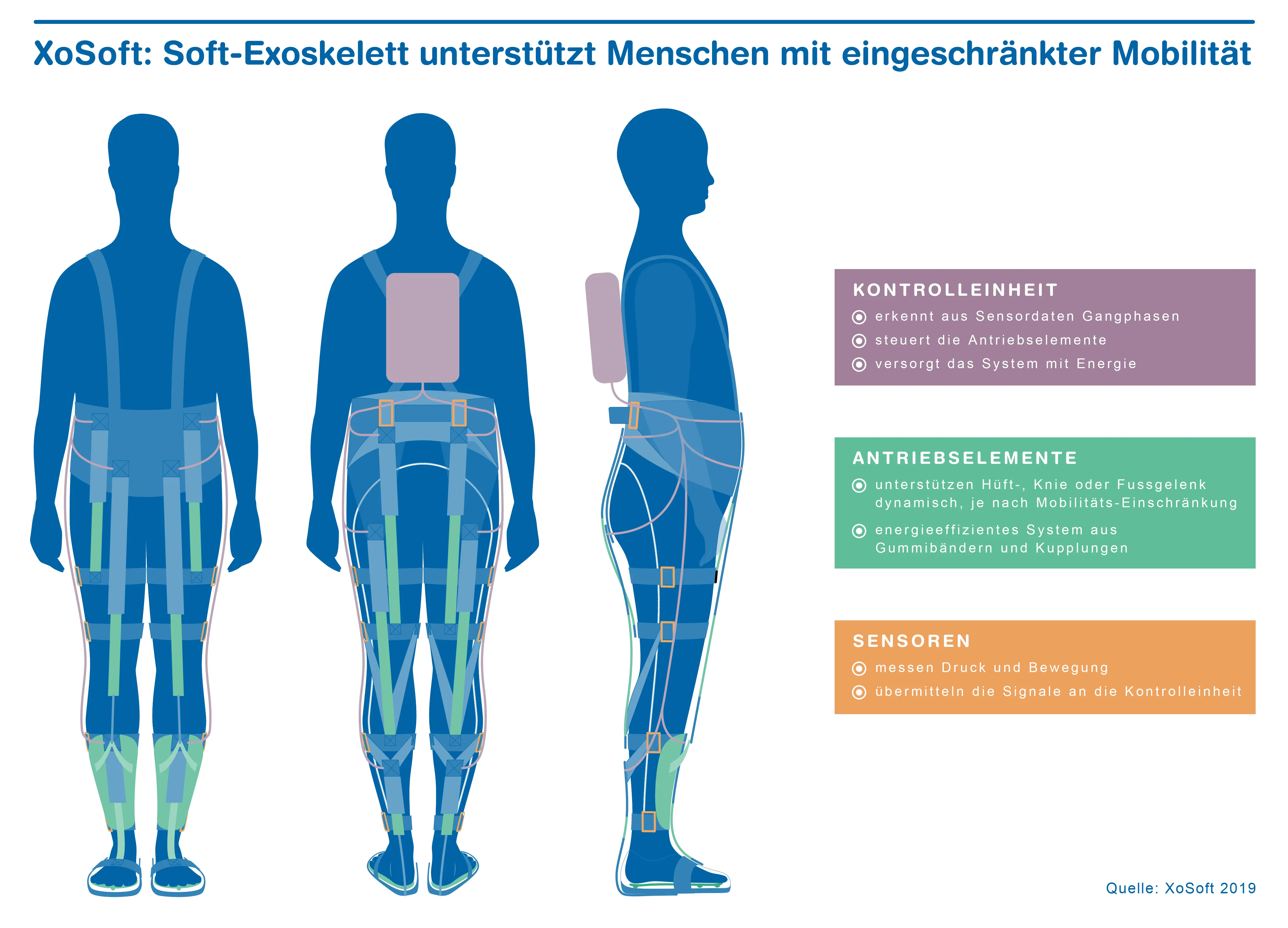Resource-efficient soft exoskeleton for people with walking impediments
Assistive walking devices for people with mobility issues often activate the limbs too little. ZHAW researchers from the fields of technology and health have therefore developed a flexible, lightweight and resource-efficient soft exoskeleton prototype together with European partners.
People whose mobility is restricted due to an accident leading to incomplete spinal cord injuries, post-stroke patients or frail elderlies often need a walking aid to move. Current assistive aids such as wheelchairs or rollators are typically bulky, relatively inflexible and often only partially support movements. Further, they typically do not encourage or support the activation of legs. Remaining active and mobile for as long as possible is however highly important for physical and cognitive health and to prevent further atrophy. To address this challenge and provide individual assistance to those affected, the ZHAW Zurich University of Applied Sciences, together with nine partners from seven European countries, has developed the «XoSoft» prototype of a soft exoskeleton as part of an EU research and innovation project. XoSoft is designed to be easy to wear, comfortable, serviceable and compatible with the daily life of the users, helping augmenting autonomy and individual performance of the users.
Movement provides energy
The heart of the XoSoft device is a system giving the user quasi passive actuation based on elastic bands and custom made pneumatic soft clutches. The elastic bands are stretched and put under tension through the movements of the wearer. The elastic bands "store" enough energy to support the patient while walking. This process is controlled by clutches that engage and lock at the right moment to return the wearer energy and provide support. "We try to give the body energy back at the right moment," explains ZHAW researcher Eveline Graf. Simplified, XoSoft can be compared with a self-winding watch. Simi-lar to the spring of the watch being charged by the wearer’s arm movements, energy in the form of tension is stored in the elastic bands through the users’ steps when walking.
Another advantage of XoSoft: the system is resource efficient and allows the wearer to control their movements. This flexibility is made possible by the system accurately recognising the patient's movements. Sensors in the garment register the movements and send the information to a controller which is currently still located in a backpack carried by the user. The controller in turn interprets the gait phase of the user and activates or deactivates the clutches depending on if tension needs to be stored.
System has potential as a passive assistive device
The XoSoft system has potential to be used by individuals who require low to moderate mobility assistance in clinical environments but also at home and for everyday life. The clutches are currently powered by a vacuum generated by compressed air connected via the backpack which means that the current prototype is not yet ready for the market. The combination of clutches and elastic bands will certainly be reused and further developed in fu-ture soft exoskeletons bringing the developed innovations and systems closer to market.
End users in the centre
According to Eveline Graf from the ZHAW School of Health Professions, innovations are often driven by technology without involving future users. «XoSoft has been developed taking into account the needs and requirements of users as well as their affiliates such as family members and physiotherapists by involving them in the design process from the start.» This ensures a higher acceptability by the users, says Graf. Multiple versions of the XoSoft prototype were developed and each prototype of the system included innovative and novel technologies including smart materials, sensors and actuators as well as biomimentic control, monitoring and connected health systems which needed to be integrated into one system before the prototype could be tested. The use of novel technologies in smart materials, advanced algorithms for biomimetic control, user centred design and an energy efficient implementation provided the technology and user need basis to accomplish XoSoft.
Contact
Dr. Eveline Graf, Institute of Physiotherapy, ZHAW School of Health Professions, Tel. 058 934 64 80, E-Mail eveline.graf@zhaw.ch
Prof. Dr. Konrad Stadler, Professor of Wearable Mechatronic Systems, Institute for Mechatronic Systems IMS, ZHAW School of Engineering, Tel. 058 934 78 27, E-Mail konrad.stadler@zhaw.ch
ZHAW Corporate Communications, Tel. 058 934 75 75, E-Mail medien@zhaw.ch
